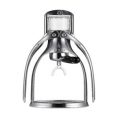Accounts payable has a credit balance since it is your current liability, so the balance increases if there is a credit entry and decreases if there is a debit entry. Maintaining accurate accounts payable journal entries is essential for financial transparency and healthy vendor relationships. Timely, precise entries enable better cash flow management and compliance with payment terms. With automation, this process is further optimized, improving efficiency and reducing errors. The liability is recorded in the accounts payable ledger when goods or services are purchased on credit. This entry helps track the company’s obligation to its vendors and ensures clear visibility of outstanding payments.
The ledger helps you stay organized, monitor your liabilities, and manage your cash flow effectively. It’s a critical tool for accurately reconciling your accounts payable with your bank statements and supplier invoices. Whenever a business purchases inventory, raw material, or other supplies on credit, a transaction can be recorded for the AP account.
Stage 4: Update the Financial Records
The accounts payable are the current liabilities that are shown on the balance sheet for which the balances are due within one year. In this case, the company has an obligation to pay suppliers based on the credit term which is usually shown on the supplier invoices. Credit duration in the credit term is usually 30 days, but it can vary depending on the type of business and the relationship between the company and its suppliers. Whenever there is any transaction related to the purchase of goods or services on the account, there arises the liability known as accounts payable liability. The amount is measured using the seller’s invoice to document the journal entries for accounts payable. It usually contains information regarding the amount that the buyer has to pay and the due date.
- You need to make your accounts payable process efficient so that it provides a competitive advantage to your business.
- Double Entry Bookkeeping is here to provide you with free online information to help you learn and understand bookkeeping and introductory accounting.
- We also integrate with leading accounting software like NetSuite, QuickBooks, and Sage Intacct to help simplify the process of making your AP journal entries.
- Additionally, the accounts payable department also negotiates credit terms with the vendors.
- For example, have a second person review all journal entries before they’re posted to the general ledger.
It includes a debit to an expense or asset account to show the purchase and a credit to the accounts payable account to reflect the liability. In general ledger an account titled as “accounts payable account” is maintained to keep record of increases and decrease in accounts payable liability during a period. When the balance sheet is drawn, the balance shown by this account is reported as current liability. Accounts payable (AP) are recorded under the current liabilities section on your balance sheet. An accounts payable (AP) department is responsible for making payments for business expenses, travel, etc. An accounts payable (AP) journal entry specifically records changes in your company’s operational liabilities—the money owed to vendors for goods or services received on credit.
Late invoice payments
Once the payability of the invoice has been verified, it is recorded in the accounting system. All invoice details and when it is to be paid are noted down in the software and in the general ledger under accounts payable liability. Errors in accounts payable journal entries can be corrected by identifying the mistake, determining the correct entry, and making a correcting entry.
What Is an Accounts Payable Aging Schedule?
When the company buys or purchases on credit, the liability will occur when goods or services are received. Hence the company will debit goods received or services expended and credit accounts payable as liabilities increase. In this case, goods can be inventory, fixed assets or office supplies, etc. and services can be consultant fee, maintenance, and advertising expense, etc. When you purchase inventory, supplies, or services on credit, you’ll need to post an accounts payable journal entry. Although accounts payable journal entries might seem straightforward at first glance, there are a few transactions that could benefit from additional explanation. Accounts Payable journal entry is the method of recording payables data in the general ledger.
The accounts payable journal entries below act as a quick reference, and set out the most commonly encountered situations when dealing with the double entry posting of accounts payable. They use relevant accounting software to make journal entries of accounts payable with better accuracy. Accounts payable automation refers to tools or processes that allow you to eliminate the manual aspects of AP, such as manual tracking of purchase invoices, bills, etc. Accounts payable automation software or AP automation software allows you to automate the entire process by online submission and approval of purchase orders and purchase invoices.
General Ledger
This comprehensive turbotax® official site guide will walk you through the process, equipping you with the knowledge and tools to confidently manage your financial obligations. Accounts Payable Journal Entries refer to the accounting entries related to amount payable in the company’s books of creditors for the purchase of goods or services. They are reported under the head of current liabilities on the balance sheet, and this account is debited whenever any payment has been made.
- It is similar to the situation when a person has received his latest electricity bill where he is allowed to pay within the next 30 days.
- However, if your accounts payable reduce relative to the previous period, this implies that you are meeting your short-term obligations at a faster rate.
- This includes the purchase of goods, sales you’ve earned, expenses you’ve accrued, equity activity, and so on.
A company’s all accounts payable accumulated show under the current liability section of the balance sheet. AP account represents the company’s short-term payable obligations to its creditors and suppliers. An increase in the accounts payable indicates an increase in the cash flow of your business. This is because when you purchase goods on credit from your suppliers, you do not pay in cash. Thus, an increase in accounts payable balance would signify that your business did not pay for all the expenses. When Robert Johnson Pvt Ltd makes payment to its supplier, the accounts payable account gets debited.
Supplier
When liability is paid off to the vendor, the amount is debited from the accounts payable account and is marked as credit into cash or the vendor’s bank account. If accounts payable journal entries are not recorded correctly, it can lead to inaccurate financial statements, misrepresentation of liabilities, and incorrect financial analysis. It may also result in payment delays, strained supplier relationships, and difficulty in reconciling accounts.
Ineffective accounts payable management can lead to invoices not being processed on time, or losing out on the opportunity to utilize discounts. Since we typically follow a double-entry bookkeeping system, there has to be an offsetting debit entry to be made in your company’s general ledger. Either an expense or an asset forms part of the debit offset entry in the case of accounts payable. Your company is paying slowly to its suppliers if its accounts payable turnover ratio falls relative to the previous period. This falling trend in the accounts payable turnover ratio may indicate that your company is not able to pay its short-term debt, and is facing a financial crunch.
A great solution to many of these problems is to employ automation technology. With accounts payable automation, it can streamline payable management while ensuring that invoices are processed within the agreed payment terms. Companies mostly find it convenient to record an accounts payable liability when they actually receive the goods. However, in certain situations, the title to goods passes to the buyer before the physical delivery is taken by him. In such situations, the liability should be recorded at the time of passage of title. Upon purchase of goods from the vendor, the amount is recorded as a debit from the purchase account and credited to the AP account.
How Should Accounts Payables be Recorded?
Accounts payable journal entry is recorded according to the type of transaction made. It can be recorded against a transaction from an expense account to your accounts payable charge. In each case the accounts payable journal entries show the debit and credit account together with a brief narrative.
You can calculate the accounts payable by generating accounts payable aging summary report, if you are using QuickBooks Online Accounting Software. This report provides a summary of all the accounts payable balances, and also lets you know about the balances that are overdue for payment. In order to figure out the accounts payable turnover ratio, you’ll first need to calculate the total purchases made from your suppliers. These purchases are made during the period for which you need to measure the accounts payable turnover ratio. Generally, QuickBooks provides a list of standard accounts, like accounts payable, accounts receivable, purchase orders, payroll expenses, etc.
It documents increases when new invoices are recorded and decreases when payments are made. Accounts payable (also known as creditors) are balances of money owed to other individuals, firms or companies. These are short term obligations which arise when a sole proprietor, firm or company purchases goods or services on account. Accounts payable usually appear as the first item in the current liabilities section of a company’s balance sheet. Recording journal entries accurately is a key part of managing your accounts payable (AP) process.
However, small companies with low transaction volume don’t maintain special journals. These companies record their purchase transactions in general journal, along with other transactions. If the purchase made from the vendor is for a service, the expense will be debited against the relevant expenses account.
Tracking and paying your accounts payable on time helps you to maintain good relations with your vendors. Also, when you pay back on time, you can save some money as many vendors offer discounts to buyers who pay their pending payments on time or early. The AP department has to set ground rules and processes to follow before making the vendor payment. These guidelines and control over the accounts payable process are essential to avoid errors caused due to manual work. When an invoice is paid, the transaction is recorded to reduce liabilities.


















